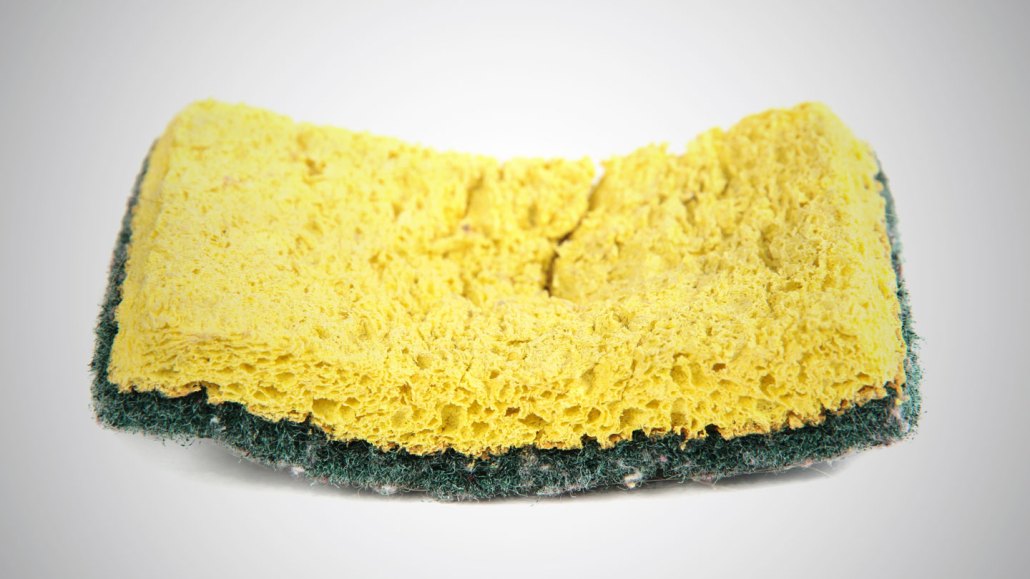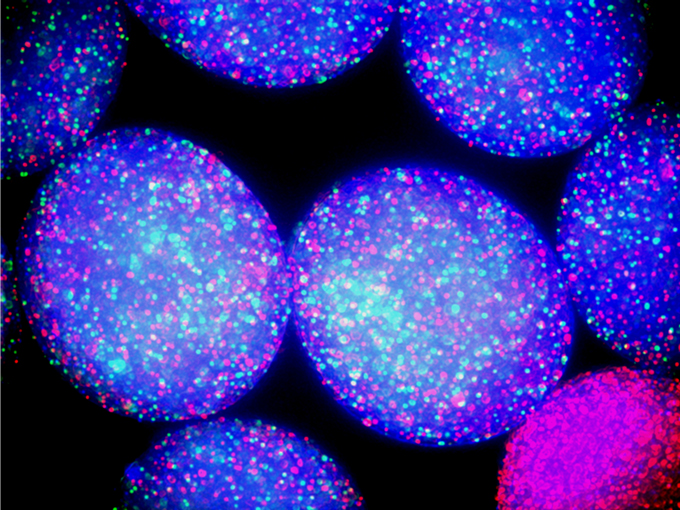
Porous kitchen sponges provide the perfect physical architecture for a bacterial community, offering the ideal number of compartments of varying sizes for the microbes to occupy, a study finds.
EricFerguson/E+/Getty Images Plus
Ask bacteria where they’d like to live, and they’ll answer: a kitchen sponge, please.
Sponges are microbe paradises, capable of housing 54 billion bacteria per cubic centimeter. In addition to being damp, airy and loaded with food scraps, sponges provide an optimal physical environment for bacteria, researchers report February 10 in Nature Chemical Biology.
Just like humans, bacteria prefer different levels of interactions with their peers. Some bacteria are more social, while others prefer solitude. Lingchong You, a synthetic biologist at Duke University, and colleagues wondered how separating different types of microbes would affect their community interactions. They found that intermediate levels of separation — similar to that found in a sponge — maximize the diversity of the community.
The researchers distributed different strains of E. coli onto plates with anywhere from six to 1,536 wells, which functioned as isolated compartments. After 30 hours, the team examined the number and types of bacterial strains on each plate.
Sign up for our newsletter
We summarize the week's scientific breakthroughs every Thursday.
Each compartment is like a party to which the bacteria were randomly assigned, You says. With only six compartments, each party probably has a similar mix of characters, and only the social bacteria survive. With 1,536 compartments, each microbe is probably alone, and the social bacteria die. But an intermediate number of compartments maximizes the odds that a microbe attends the party it prefers. An antisocial microbe might die at a party that’s dominated by socializers, but another antisocial microbe might wind up at a chill gathering and survive. Biodiversity is preserved.
“In retrospect, it’s very, very intuitive,” You says. “What we have identified is a principle that’s universally applicable for any microbial communities.”
Kitchen sponges, with an array of large and small holes, not only offer an ideal number of compartments for bacteria, but also provide a range of varying-sized parties that can suit more of the microbes’ needs. In experiments with a kitchen sponge, the researchers found that the resulting bacterial community was more diverse than those produced in liquid cultures, a common method of growing bacteria in a laboratory.

Fortunately, the bacteria partying in your sponge are mostly nonpathogenic. But if dangerous bacteria — like Salmonella from raw chicken — do show up, the sponge’s optimal structure will probably help them survive (SN: 8/9/10).
“Sponges are not really well-suited for kitchen hygiene,” says Markus Egert, a microbiologist at Furtwangen University in Villingen-Schwenningen, Germany, who was not involved in the study. “There’s hardly any sterile surface at home, but the kitchen sponge is probably the most densely populated item at home.”
The good news is that it’s easy to solve the problem. Brushes are a much safer alternative. And if you love your sponge, don’t use it for meat juices. No need to invite bad bacteria to the party.






